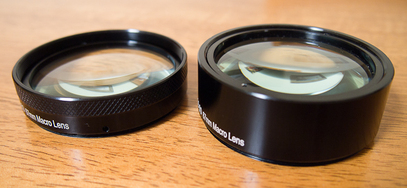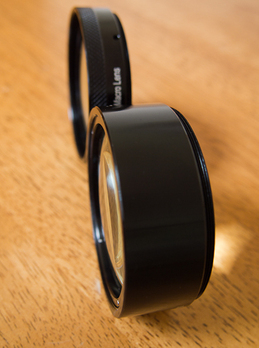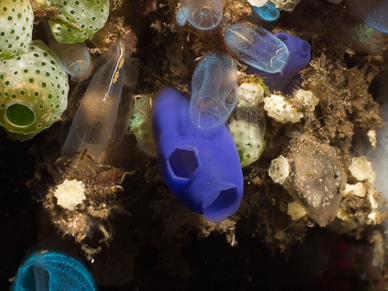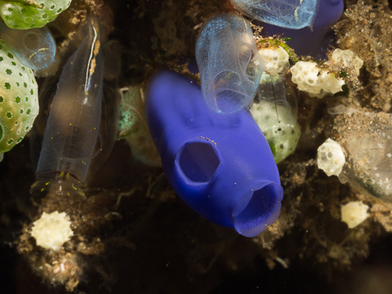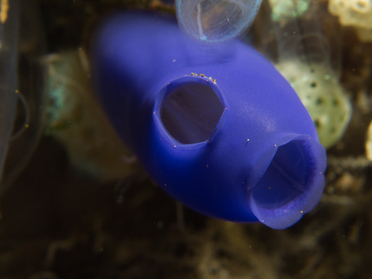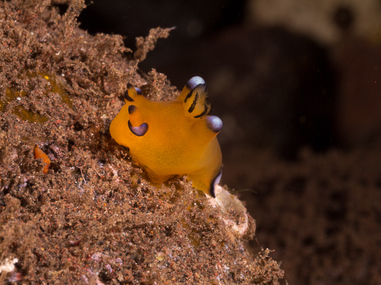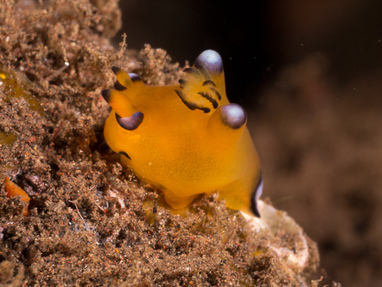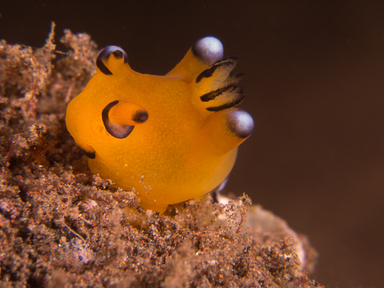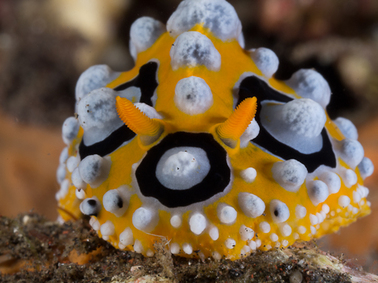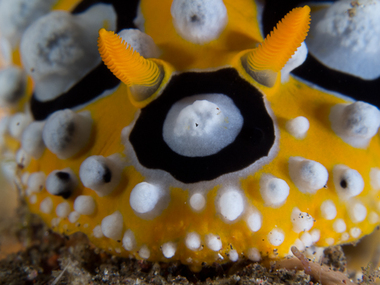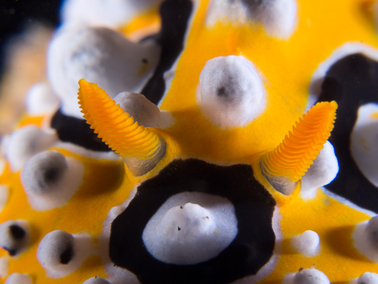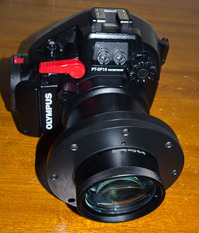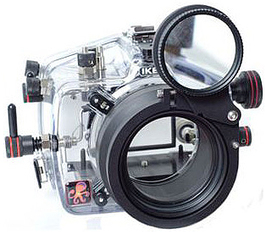Reef Images (GoSo)
Macro 67mm Wet Lens Information
|
We have two strengths of Wet Lenses available: +10 and +20.... and the question we most often get asked is " Which lens best suits my camera". Well there isn't an easy answer. The reason we produce two lenses is because one lens does not cover the entire spectrum of macro underwater photography. Following are the differences:
|
- The Reef Images (GoSo) +10 Wet lens is the easiest to use, it has a greater flexibility in the distance you can be away from your photo subject and still achieve focus.When fitted to many of the current range of compact camera's (like the Canon G12/G15/G16 or S100/S101/S110/S120 or Sony RX100 series I, II or III) it will be useable at almost the full range of the camera's zoom without cropping the corners of your photos. The greatest magnification will be achieved with the camera's zoom set to the longest focal length (fully zoomed-in showing the narrowest field of view). Typically the focus distance (from the lens to the subject) should be between 15cms - 30cms, but this varies with the amount of zoom and the camera model (It is best to test your own camera/housing combinations to find the optimium distance/s for your set-up). It also works very well fitted to the front of a dSLR housing fitted with a macro lens on the camera (best used with 80-100mm prime lenses for the greatest benefit).
- The Reef Images (GoSo) +20 Wet lens is a little harder to use, as it has a narrower field of view, greater magnification and less flexibility in the distance you need to be from your photo subject to achieve focus. However due to its greater magnification, you can take photos of much smaller subjects and fill the frame of the photo with them. It does have less depth of field (the amount of the photo in focus), but this is a consequence of greater magnification. When fitted to many of the current range of compact camera's (like the Canon G12/G15 or S100/S101) it will only be useable from approximately half way through the zoom range of your camera without cropping the corners of your photos at the wider lens zoom settings. However, when the camera's zoom is set to the longest focal length (fully zoomed-in showing the narrowest field of view). You will achieve strong magnification and tiny subjects will fill your frame. Typically the focus distance (from the lens to the subject) should be between 5cms - 15cms, but this varies with the amount of zoom and the camera model (It is best to test your own camera/housing combinations to find the optimium distance/s for your set-up). It also works very well fitted to the front of a dSLR housing fitted with a macro lens on the camera (best used with 60-100mm prime lenses for the greatest benefit).
- You can double stack these lenses - ie. screw one lens to the camera housing and then screw another wet lens on the front. You can double stack two +10 lenses to achieve a slightly less magnification as a +20 lens, or stack two +20 lenses to achieve a magnification of close too +30. This combination may be too much for some camera's, but with many dSLR and Mirrorless compacts (Micro Four Thirds) it can give extreme magnification (one double stacked sample photo below).
- Prices of our Reef Images (GoSo) Macro Wet Lenses:
Reef Images (GoSo) + 20 Wet Lens Pt No: M67+20 (US$148 + Postage)
|
To order or enquire about our Wet Lenses, please use our
|
Below are a few images taken using our Reef Images (GoSo) +10 and +20 Macro Wet Lenses. These aren't particularly exotic photos, but they are here to show you the magnification results you can expect in the real world of u/w photography, rather than photos of rulers in swimming pools or bathtubs!. If you have any questions about your particular camera/housing and the results you can expect, then please use our Reef Images Enquiry Form for more information.
You can also go to our 67mm Wet Lens Comparison page,
where we compare our lenses to other widely available brands of 67mm lens.
You can also go to our 67mm Wet Lens Comparison page,
where we compare our lenses to other widely available brands of 67mm lens.
|
Photo's 1A, 1B, 1C show a blue ascidian with:
|
|
Photo's 2A, 2B, 2C show a nudibranch with:
|
|
Photo's 3A, 3B, 3C show a nudibranch 'face' with:
|
|
We stock various 67mm Macro Lens mounts for both compact, mirrorless and dSLR camera housings. Visit our Swing Away (Flip Mount page, or Fixed 67mm Wet Lens Mount page.
|
